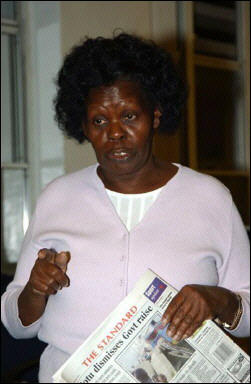Where the Hell is Moses Kuria?
It seems Moses Kuria, the man of many portfolios, embarked on a whirlwind adventure through the halls of government, only to find himself in a comedic conundrum. Starting off strong as the Cabinet Secretary for Investments, Trade, and Industry, he was the talk of the town. But alas, fate had other plans. In a twist fit for a sitcom, Kuria found himself shuffled over to the Public Service portfolio faster than you can say "bureaucratic shuffle". Then, the plot thickened! In a classic case of diplomatic drama, the US Trade Representative, Katherine Tai, decided to give Kuria a cold shoulder after cancelling not one, but two meetings with him. The reason? His "foul mouth". Oh, the irony! It seems even the most seasoned politicians can't escape the wrath of a sharp tongue. Since then, Kuria has seemingly vanished into thin air, keeping a low profile that would make even Bigfoot jealous. Rumour has it he's taken up residence in a cozy cave somewhere, pondering th



Comments